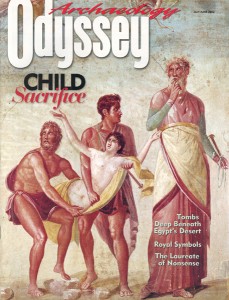Ancient Life: Crowning Glory
Never a bad hair day in ancient Egypt
The ancient Egyptians were insistent, even somewhat priggish, about keeping tidy. According to the Greek historian Herodotus (c. 485–425 B.C.), “The linen cloaks they wear are always freshly washed; this is something they are very particular about. Their concern for cleanliness also explains why they practice circumcision, since they value cleanliness more than comeliness” (Histories 2:37).
But they weren’t entirely oblivious to beauty. If the Egyptians kept properly clean by shaving their heads to rid themselves of lice, they also met the demands of comeliness by putting on wigs.

The 18th Dynasty (1550–1295 B.C.) wig shown above, discovered at Thebes, was woven from about 120,000 strands of human hair. Each curl and plait was coated with a mixture of beeswax and resin, then fixed in place with even more wax to create a hair piece so sturdy it has lasted 3,500 years.
Wigs were commonly used by both men and women. Pharaohs had their own hairdressers, who wove and styled wigs from real human hair—so perhaps our example was once worn by an Egyptian princess. The lower castes made wigs out of sheep’s wool and plant fibers.
Already a library member? Log in here.
Institution user? Log in with your IP address.

